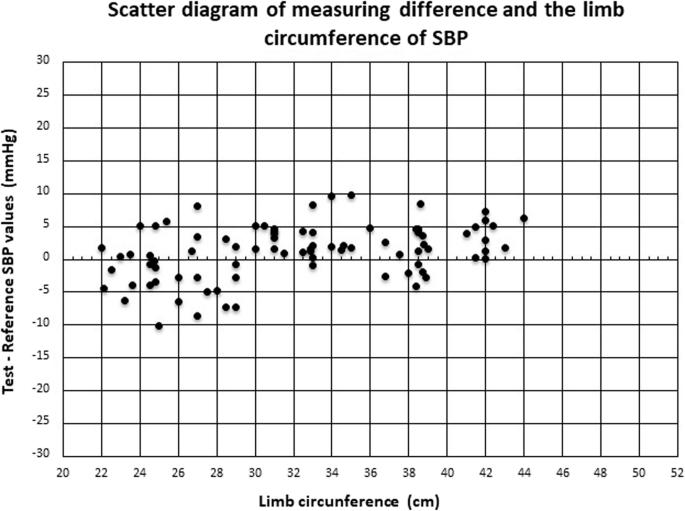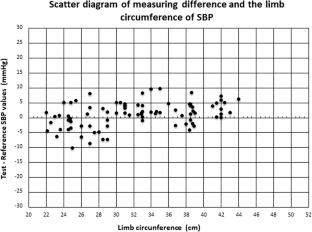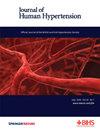康美药业 hipermax-BF A7101 型自动示波上臂式血压计在普通人群中的验证:AAMI/ESH/ISO通用标准(ISO 81060-2:2018/Amd 1:2020)。
IF 2.7
4区 医学
Q2 PERIPHERAL VASCULAR DISEASE
引用次数: 0
摘要
作为美洲 HEARTS 计划的一部分,本研究评估了 Hipermax-BF A7101 型(Combiomed,古巴哈瓦那)自动示波上臂血压计在普通人群中用于办公室和家庭的准确性。这项研究是根据通用标准 AAMI/ESH/ISO ISO 81060-2:2018/Amd 1:2020 制定的。受试者是根据年龄、性别、血压值和上臂围度等要求招募的。采用相同的上臂顺序血压测量方法。在使用测试设备进行测量时,使用的是 22-44 厘米肢围范围内的两件式袖带。共招募了 92 名受试者,对 85 名受试者进行了分析。平均年龄为 44.8 ± 14.7 岁,平均上臂周长为 32.3 ± 6.2,56.5% 为女性。对于验证标准 1,被测设备与参照设备之间读数差异的平均值(± 标准差)为 1.2 ± 4.9/0.8 ± 4.9 mmHg(收缩压/舒张压)。对于这两种压力,标准 1 要求差异的平均值≤ ± 5 mmHg,标准偏差≤ ± 8 mmHg。对于验证标准 2,每个受试者的平均血压差异标准偏差为 4.2/4.2 mmHg(收缩压/舒张压)。根据标准 2 的表 1,对于 1.2/0.8 mmHg(收缩压/舒张压)的平均值,收缩压的最大允许标准偏差必须小于 6.84,舒张压的最大允许标准偏差必须小于 6.89。Combiomed Hipermax-BF A7101 自动血压计符合 AAMI/ESH/ISO 通用标准(ISO 81060-2:2018/Amd 1:2020)对普通人群的要求。本文章由计算机程序翻译,如有差异,请以英文原文为准。


Validation of combiomed hipermax-BF model A7101 automatic oscillometric upper-arm sphygmomanometer in general population: AAMI/ESH/ISO universal standard (ISO 81060-2:2018/Amd 1:2020)
This study evaluates the accuracy of the Hipermax-BF model A7101 (Combiomed, Havana, Cuba) automatic oscillometric upper-arm sphygmomanometer for office and home use in general population as part of the HEARTS in the Americas initiative. The research was developed according to the Universal Standard AAMI/ESH/ISO ISO 81060-2:2018/Amd 1:2020. The subjects were recruited according to the requirements of age, gender, blood pressure values and upper-arm circumference. The same upper-arm sequential blood pressure measurement method was used. For measurements with the device under test, the 2-piece cuff from 22–44 cm limb circumference range was used. 92 subjects were recruited and 85 were analyzed. Mean age was 44.8 ± 14.7 years, mean upper-arm circumference was 32.3 ± 6.2, and 56.5% were female. For Validation Criterion 1, the mean value ± standard deviation of the differences in readings between the device under test and the reference device was 1.2 ± 4.9/0.8 ± 4.9 mmHg (systolic/diastolic). For both pressures, in criterion 1 the standard requires a mean value of the differences ≤ ± 5 mmHg and a standard deviation ≤ ± 8 mmHg. For Validation Criterion 2, the standard deviation of the mean blood pressure differences per subject was 4.2/4.2 mmHg (systolic/diastolic). According to Table 1 of criterion 2, for the mean values of 1.2/0.8 mmHg (systolic/diastolic), the maximum allowable standard deviation had to be < 6.84 for systolic and < 6.89 for diastolic pressure. The Combiomed Hipermax-BF A7101 automatic sphygmomanometer meets the requirements of the AAMI/ESH/ISO Universal Standard (ISO 81060-2:2018/Amd 1:2020) in the general population.
求助全文
通过发布文献求助,成功后即可免费获取论文全文。
去求助
来源期刊

Journal of Human Hypertension
医学-外周血管病
CiteScore
5.20
自引率
3.70%
发文量
126
审稿时长
6-12 weeks
期刊介绍:
Journal of Human Hypertension is published monthly and is of interest to health care professionals who deal with hypertension (specialists, internists, primary care physicians) and public health workers. We believe that our patients benefit from robust scientific data that are based on well conducted clinical trials. We also believe that basic sciences are the foundations on which we build our knowledge of clinical conditions and their management. Towards this end, although we are primarily a clinical based journal, we also welcome suitable basic sciences studies that promote our understanding of human hypertension.
The journal aims to perform the dual role of increasing knowledge in the field of high blood pressure as well as improving the standard of care of patients. The editors will consider for publication all suitable papers dealing directly or indirectly with clinical aspects of hypertension, including but not limited to epidemiology, pathophysiology, therapeutics and basic sciences involving human subjects or tissues. We also consider papers from all specialties such as ophthalmology, cardiology, nephrology, obstetrics and stroke medicine that deal with the various aspects of hypertension and its complications.
 求助内容:
求助内容: 应助结果提醒方式:
应助结果提醒方式:


